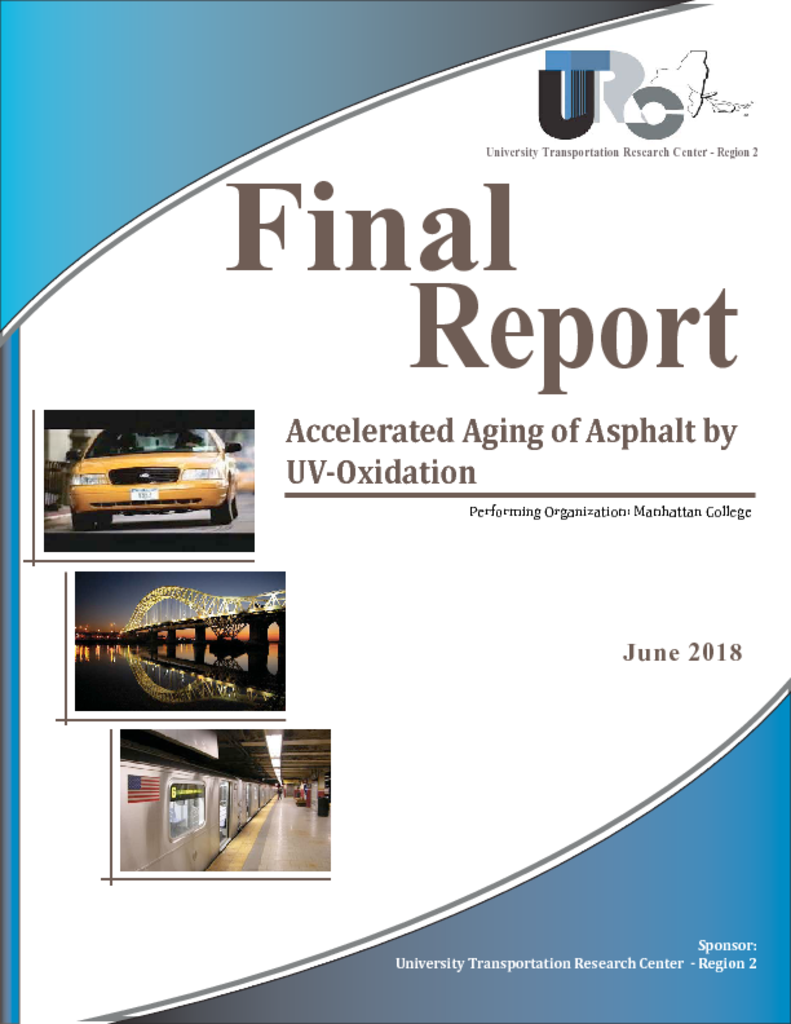The aging of asphalt binder due to UV-oxidation is a phenomenon that affects the durability and performance of asphalt pavements. This report documents results of accelerated laboratory UV-oxidation tests that have been conducted. Thin-film asphalt binder samples have been oxidized using fluorescent UVA and UVB lamps, and the degree of oxidation was determined by measuring the rotational viscosity of the aged binder. The results show that the viscosity increases with the UV-exposure time. This indicates that rotational viscosity is a suitable method to track the UVoxidative aging of asphalt and validates its use in further studies of this phenomenon. Additionally two UV-aging models were fitted to the experimental results.




